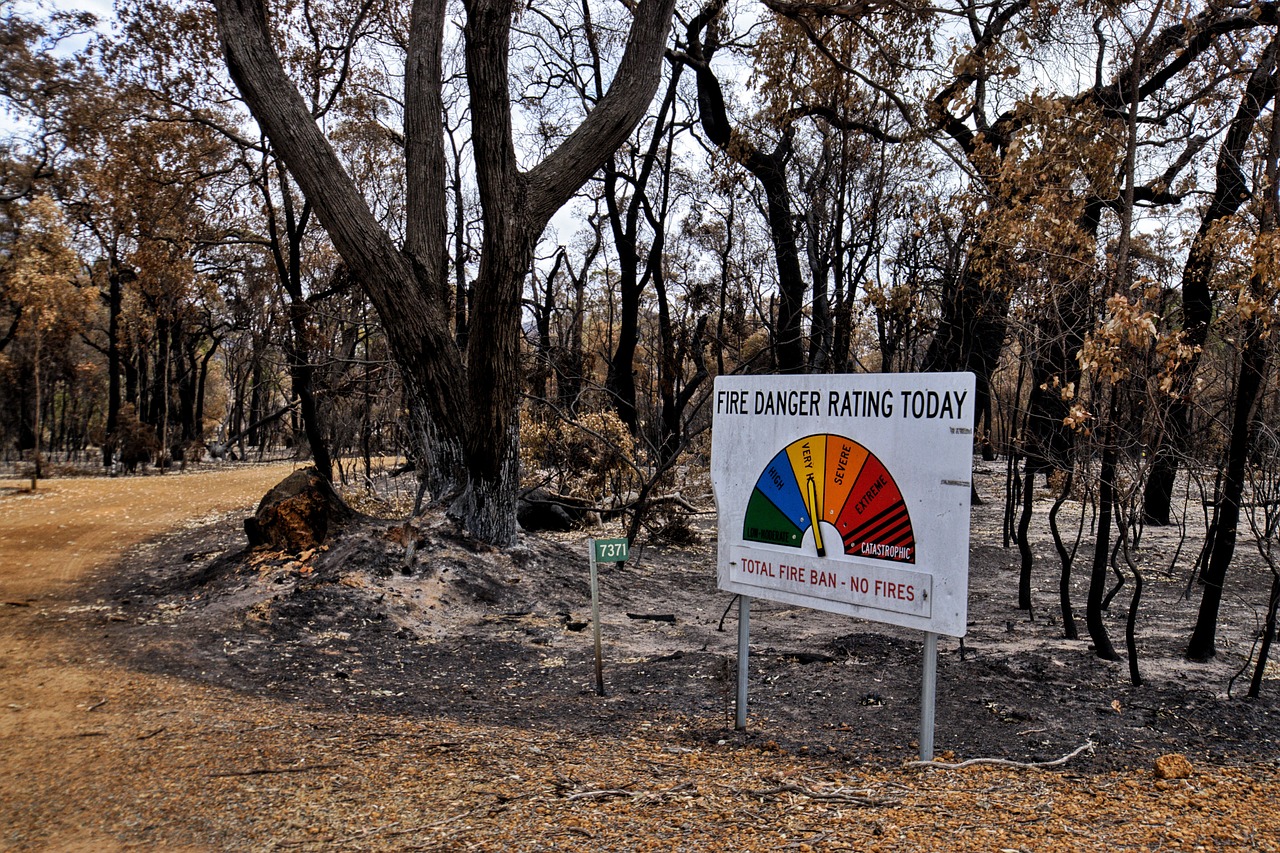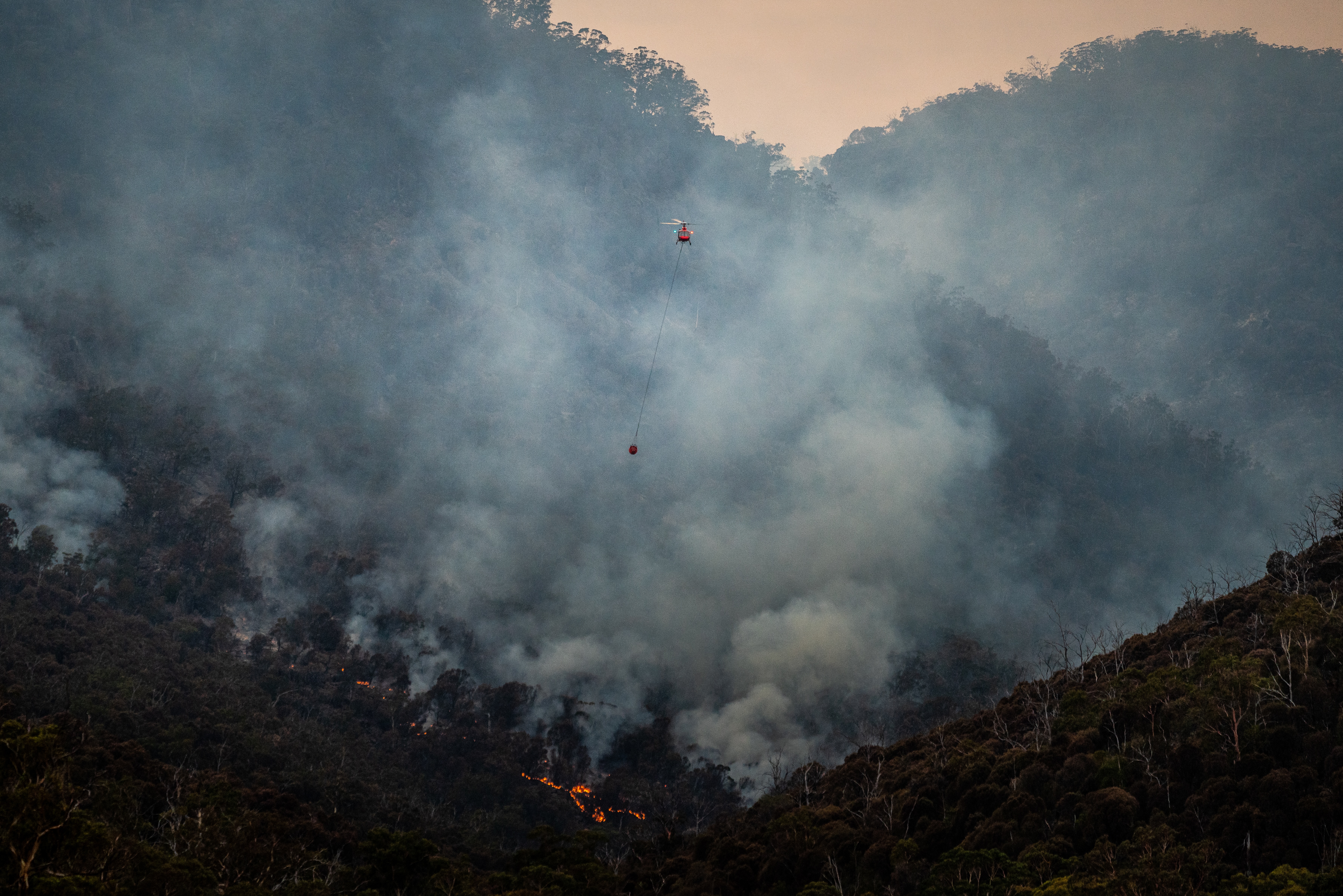After the widespread devastation of Australia’s Black Summer bushfire season in 2019-20, the years since have been comparatively quieter. Though necessary in controlled conditions to help facilitate local ecologies, bushfires pose a major risk to Australian natives and wildlife. Thankfully, the destruction seen in Black Summer has yet to be repeated.
However, with bushfires, a period of relative respite can often be a double-edged sword. With Australia’s ever-fluctuating weather conditions worsened by climate change, alongside a significantly rainy La Niña cycle, the 2023-24 bushfire season is understandably a considerable cause for concern.
Of Australia’s 10 hottest years on record, 8 of those have been since 2010, with 2023 being the hottest to date. With heat records already smashed in springtime, all signs indicate that 2023-24 could be one of the worst bushfire seasons in history.

The 2023-24 bushfire season so far
Though merely days into 2024 with summer’s hottest point still to come, there’s substantial evidence that 2023 was demonstrating bushfire levels not seen since Black Summer.
Between January and October 2023, Australia’s Northern Territory had its third largest fire year since 2000, and in December, notable fires struck both New South Wales and Western Australia.
On December 19th, Sydney was left covered in a cloud of thick smoke from a large bushfire hundreds of kilometres away, creating hazy conditions in the city and leaving the air quality amongst the worst in the world at the time. Between December 20th and 22nd, a procession of huge fires in WA led to emergency evacuations, destroyed homes and tragically, the loss of life.
Why is the risk so high this year?
Too much fuel
A key reason why Australia’s last few years have seen fewer bushfires is because it was in the midst of a La Niña weather cycle, which traditionally coincides with heavy rain.
Though this ensures the local vegetation flourishes, it quite literally creates fuel for the fires. As new or larger plants begin to dry out, the fuel load, i.e. the total amount of combustible material, is increased to abnormal levels, subsequently giving any bushfires significant ammunition to burn through.
Amid Australia’s hottest ever summer, where the ground is at its driest and risk of bushfires at its highest, this larger-than-average fuel load creates the perfect conditions for bushfires to rage out of control and wreak destruction.
Whilst recent years of heavy rain provided a much-needed lull, this is undoubtedly a catalyst for why this year’s early-season bushfires have reached previously unseen sizes.
This means they are becoming even harder to contain as they rapidly spread, covering massive areas of land and engulfing firefighters in thick walls of smoke as they try to get the fires under control.
Invasive plant species
Another significant addition to the dangerous fuel load levels is invasive, African-native buffel grass, which over the past 30 years has become a prevalent aspect of the local ecology in the country’s most arid areas.
Initially introduced as pasture for grazing animals and to reduce erosion, many concerned groups are calling on the Northern Territory government to declare buffel grass as a weed, given its implication in recent large bushfires and having a catastrophic effect on Australia's natural and socio-economic landscapes.
With buffel grass now firmly entrenched in the Australian ecology, it has continued to spread into areas that previously carried minimal fire risk, meaning fire is able to move through areas it would not have just 30 years ago.
Buffel grass grows rapidly and relentlessly, even after a fire has struck, creating a consistent fuel stream for bushfires in places where the fuel load would normally be eradicated. Therefore, fires keep burning at an unmanageable rate for local authorities to control.
Whilst important for the livestock trade, it is clear that buffel grass is changing the behaviours of bushfires, hence why Australia continues to see fires raging with greater intensity and frequency than ever before, and another reason that the 2023-24 bushfire season carries an increased level of risk.
Limited mitigation and land management
Not only has the La Niña cycle added to the fuel load, but also increased the risk of bushfires spreading, limiting the mitigation activities usually undertaken during bushfire season.
Typically, Australian fire services will start a backfire, deliberately burning an area in front of a bushfire in order to prevent it spreading to a larger area. This consumes some of the combustible material in the area, creating an almost impenetrable belt that stops the bushfire in its tracks.
However, with heavy rain in recent years, combustible material in suitable areas for backfires is too rich in moisture. Damp conditions mean the fuel load won’t burn, rendering the tactic of starting backfires ineffective, so when bushfires do strike, there’s nothing to stop the spread.
An integral part of Australia’s history of fighting bushfires is the tireless work of Indigenous land managers, who take extreme care to manage fuel loads in Australia’s arid landscapes. Their work is essential to ensure that local ecology reaps the benefits of controlled bushfires whilst avoiding conditions that facilitate dangerous levels of growth.
It is consistently proven that in areas where there is effective fuel load management through controlled burns by Indigenous rangers, bushfires do not reach the abnormal sizes that have been prevalent in recent seasons. Over multiple years, this both boosts the local plant life and ensures this land is not as severely affected by bushfires compared to other areas.
Despite their considerable efforts, limited resources dedicated to land management has resulted in the lack of a largescale concerted effort to manage fuel loads across the most affected areas.
Though the Albanese government recently committed $1.3bn to doubling the number of Indigenous rangers by 2030 and establish 10 new Indigenous protected areas managed by First Nations groups, the positive effects of this won’t be felt until long after the 2023-24 bushfire season.

What does this mean for insurers?
Understandably, recent years have seen the insurance industry and Australian government at loggerheads concerning bushfires.
Since Black Summer, insurers have paid out a considerable amount of money to those affected by bushfires. However, this has resulted in a rise in premiums, as insurers seek to stay afloat amidst increasingly expensive bushfire seasons.
Insurers have been critical of the Australian government and a lack of preventative measures around bushfires, suggesting if areas were better protected, then premiums would not be so high.
It is a difficult balancing act for both insurers and the government, as whilst nobody wants to leave those living in bushfire-affected areas unprotected, there is increasing pressure on local authorities to ensure communities are supported and the size and spread of bushfires is kept under close control.
With the increased risk of bushfires in the 2023-24 season, it is highly likely that insurance companies will be frequently called upon to keep their promises to those in need, meaning it is going to be an expensive summer.
To ensure both short and long-term success in supporting those in need when bushfires are at their most dangerous levels, it is essential that insurers and the local/federal Australian governments work together to find a way to best protect communities across the country.
This could be done by harnessing powerful digital tools that crucially provide decision-makers with the required data and insight to keep close tabs on bushfires, something that we at MIS are proud to help facilitate.

MIS fire coverage
MIS have covered global fire events like Australia’s bushfire season for several years, including assessing the damage caused by Black Summer in NSW and Victoria, as well as the 2021 California wildfires and last year’s major wildfires in Canada and Hawaii.
Via our data-led intelligence platform the Global Events Observer (GEO), our team of NATO-trained analysts assess imagery and data from trusted global sources in the aftermath of wildfires, to provide insurers with the required insight to swiftly respond to those in need.
Within 48 hours of a fire, we can provide clients with an in-depth report and high-resolution imagery, followed by a detailed building-level damage assessment just 3 days later.
Contact our team today to see what GEO can do for you.





